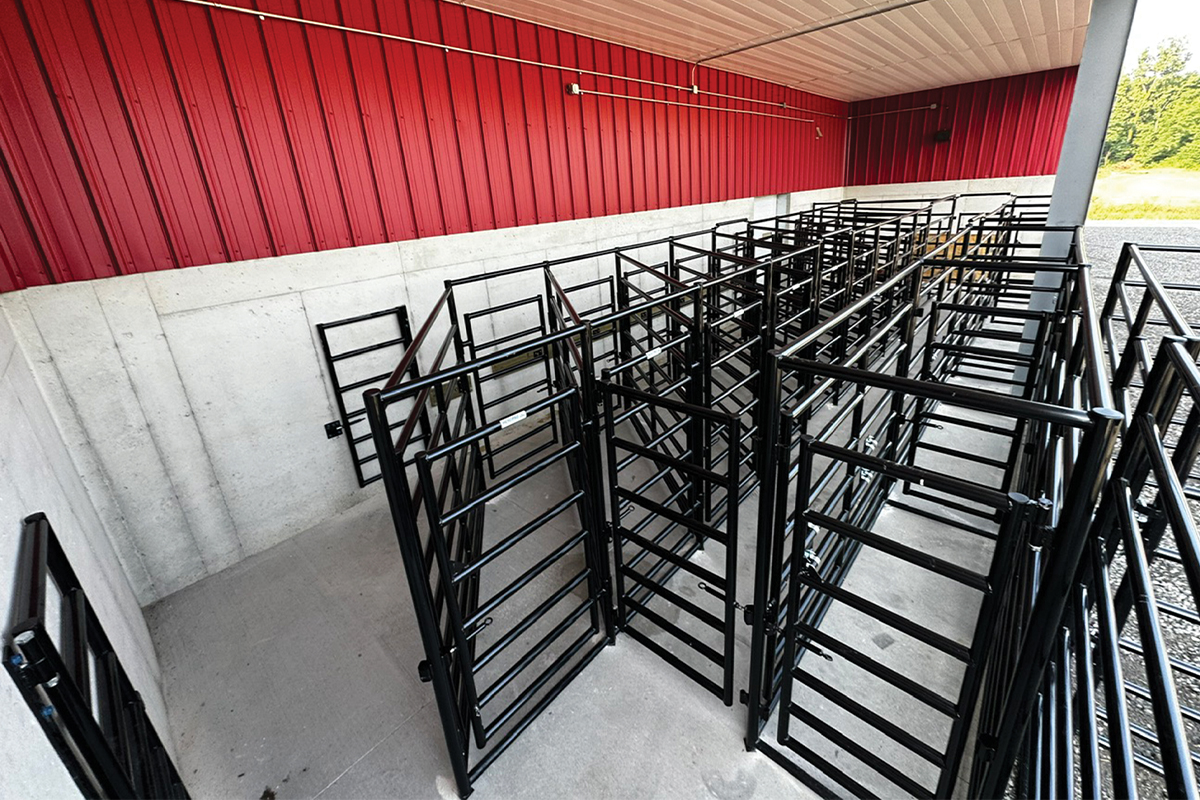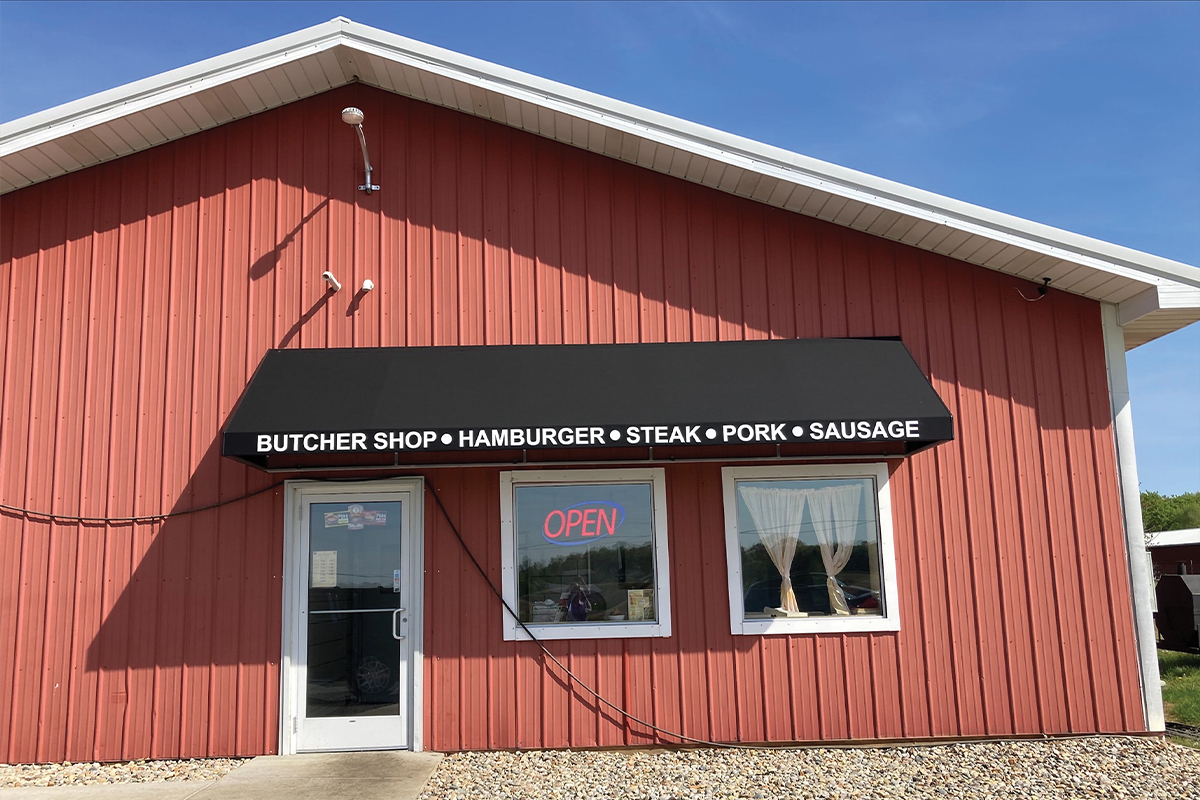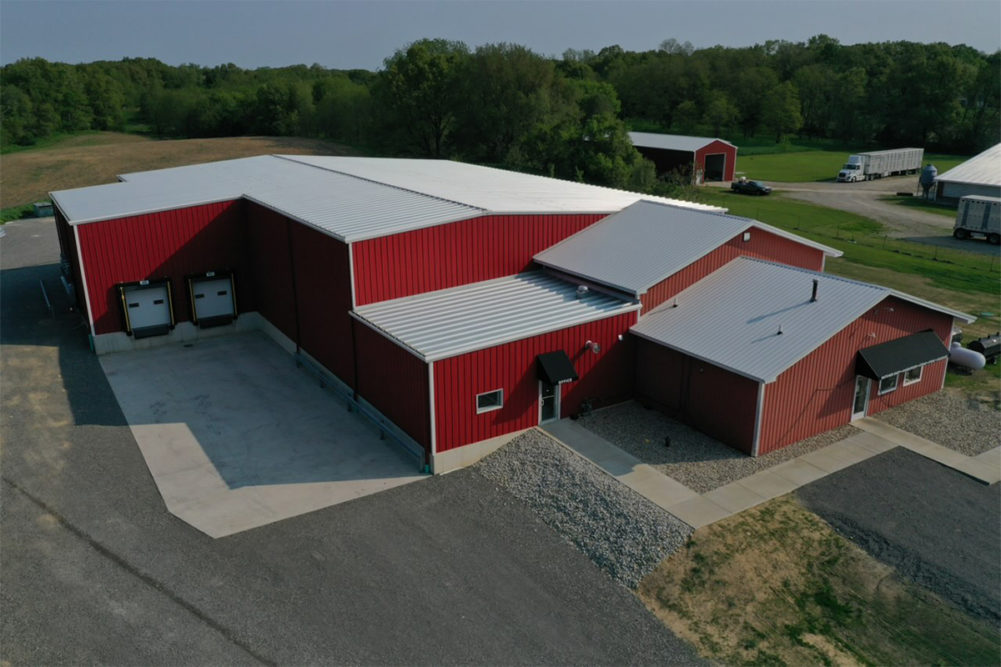Marlin Stutzman’s father grew up on a traditional dairy farm in the 1960s and 1970s covering about 260 acres with dairy cows, some pigs and chickens and farming hay. He eventually got married and in 1976 began working on a large dairy operation in in Sturgis, Mich., where Marlin would grow up and his father would pass along his love of farming and agriculture.
“I got to see a large operation for the first 12 years of my life,” said Marlin Stutzman, managing partner of Stutzman Group and co-owner of Stutzman Brothers Meats and The Barns at Nappanee Theater, Dining and Events venue in Nappanee, Ind.
Stutzman’s father moved from the dairy operation and began his own corn and soybean farm in Howe, Ind. This farm is where began a Hereford herd that grew to a significant size, but a tragedy took Stutzman on a detour from farming.
“After 9/11 happened, I ended up in politics,” Stutzman said. “So, it was tough to keep a livestock herd while serving an office. So, I sold the herd to a neighbor.”
Production to processing
While working in Washington, Stutzman and his brother Matt purchased a pork processing business (Mishler Packing Co., a producer of pork patties and pork burger products) in Sturgis, Mich., with the intent of adding on to its slaughter facility or building a slaughter facility on the premises. Stutzman also learned about raising wagyu through a friend. The last year Stutzman served in Congress was 2016. When he returned from Washington, he wanted his children to have the same experiences with agriculture that he’d had as a boy, so they started a grass-fed herd. However, he wasn’t satisfied with the product. After speaking with a friend and trying the wagyu at his restaurant in Roanoke, Ind., he changed his family farming operation to wagyu.
With genetics purchased in 2017, the herd currently stands at 24 head of full-blooded wagyu. The farm recently started a feed program with seven head and has plans to grow. Daniel Weaver, a family friend, and project manager at Anchor Construction in Granger, Ind., the design-build firm leading the new plant project to process Stutzman’s wagyu, has already bought a bull.
The Stutzman Group looked at different existing plants, but ultimately reached out to Anchor and had multiple conversations for a design and build. COVID hit and delayed the plans, but the Stutzman Group did make the decision to build rather than buy.
“We were already a USDA facility there in Sturgis [Mishler Packing]. We would build our facility there and expand there and add a kill floor,” Stutzman said. “The primary focus was to process Japanese wagyu beef and also service the community as well with a slaughterhouse, kill and chill, as well as processing and packing for customers here in the Midwest.”
The Mishler Packing facility gave the Stutzman Group an existing 2,300 square feet. The new building covers 11,700 square feet and plans to process 100 head a week once fully staffed and operational. The beef facility will run one line for wagyu and the other will handle private sale [custom processing for other producers].
“So, we went from 2,000 square feet, to adding on another almost 12,000 square feet,” Stutzman said. “It increased our capacity tremendously.”
 Anchor Construction persevered in its first project that would involve live animals. (Source: Anchor Construction)
Anchor Construction persevered in its first project that would involve live animals. (Source: Anchor Construction)Getting it built
Construction workers broke ground on the new processing facility focused on Japanese wagyu beef. This was Anchor’s first meat processing plant, but they used their history as a design-build company with finished projects for key players in their respective industries all over the country.
Anchor took over the project for Stutzman so he could carry on with other responsibilities without the need to manage another complete team of people.
“We can bring value from the permitting on to design, sometimes even starting land acquisition all the way through to the end,” Weaver said.
Anchor did face some challenges in building its first slaughter and processing plant. In manufacturing and warehousing, a firm designs to prioritize maximization of space and limited distance of travel. But penning live animals, a rail system that carries meat to various stations of chill and storage, as well as custom processing, created some differences. The facility will also be US Department of Agriculture (USDA) inspected.
“The project was unique in the fact that it relates to animals,” Weaver said. “We had a lot of back and forth with the pen design in our pen area here, and again, you’re complying with USDA regulations, how animals need to be treated and held. But not only that, you’re also trying to maximize space and flow and things like that. In a way, similar to the layout of any other building we do where we have to think through these things, but in a way totally different because it relates to animals.”
The original ownership group of Mishler Packing also offered ideas for layout and design and rounded out a group of participants in working out the design of the new facility. Ultimately, Anchor led the way and Stutzman said the firm impressed him every step of the way with equipment ideas, the rail system, all the way through to the final, finished facility.
“The efficiencies that we already have are just incredible,” Stutzman said. “Whether it’s the freezer size, or the ability to maneuver pallets of finished product or raw product around the plant, it’s making our employees’ jobs, our team’s job much, much easier.”
The team also faced challenges on the financing side. Because the industry has consolidated to a smaller number of large USDA packing plants, banks were wary at first when approached with the plan for the new facility. They hadn’t seen plans for processing plants of this size, that are federally inspected and include a kill floor with packaging operations and custom processing. But Stutzman Group used its strong banking relationships and histories to work through the challenges with the banks and figure out a way.
“There was a learning experience for both the banking side and us as we worked through all of it,” Stutzman said.
 A retail shop is part of The Stutzman Group's new facility in Sturgis, Mich. (Source: The Stutzman Group)
A retail shop is part of The Stutzman Group's new facility in Sturgis, Mich. (Source: The Stutzman Group)Customers and craftsmanship
The Stutzman Group already has interest in its wagyu from distributors of the pork burger products coming from the Mishler Packing facility, as well interest from smaller distributors around the state of Indiana.
“There’s just a lot of interest in — once we’re fully operating — how much product can they get,” Stutzman said. “And the wagyu has drawn a lot of attention and that’s probably the space that we’ll focus on.”
In addition, there will be “kill and chill.” The facility will kill animals, cool down the carcasses and hang them. Once ready, the plant will ship them to boutique type processors and meat shops around the region.
The Stutzman Group also has the restaurant in Nappanee. Next year it will roll out a full steak menu and brand itself as a steakhouse featuring Stutzman Brothers Meats as its main wagyu product line. That brand will come from the wagyu produced from the Stutzman family farm and processed at the new plant. The Mishler Packing pork patties and hamburger patties will fill out the menu’s non-wagyu products with some other products that are in the works through other partnerships.
“COVID was obviously a huge disruption, but through that it has created opportunities in the food production space for more locally grown, regionally produced products, and we’re already seeing an increase in sales in those spaces,” Stutzman said.
The new facility will incorporate some specific technology for its wagyu production. Because the wagyu system of grading is different than the American grading scale, the plant will use a specific camera system to grade the meat. The photo will be uploaded, and a third party will grade it.
“Then we can pay our producers based on the grading of their particular products,” Stutzman said.
Product will also carry a QR code with as much history and genetic information on the beef as well.
When it comes to automation, there will be some, but for the most part, everything will be done by hand. Animals will be killed, hung, weighed and cooled the modern ways so producers know what their animals weighed live and what they weigh in the hanging rooms.
“But the processing room gets back to what I call craftsmanship,” Stutzman said. “It’s the butcher that still cuts and packages the meat. It’s still an art.”
As a USDA facility three miles north of the Indiana-Michigan state line with customers in both states, the new facility is in an excellent location, and there aren’t many USDA facilities in close proximity to the plant or its customers, making the location even more appealing.
“We finally broke ground with Anchor in 2022 and our equipment is in,” Stutzman said. “We’re about to kill our first beef here in the next week or two [Sept. 11 – Sept. 22, 2023] and we’re really excited about it. It’s just been a neat process working with Anchor Construction and the team there. Daniel’s [Weaver] done a remarkable job as a project manager, and it’s been a lot of fun. We’re excited about the future.” 



